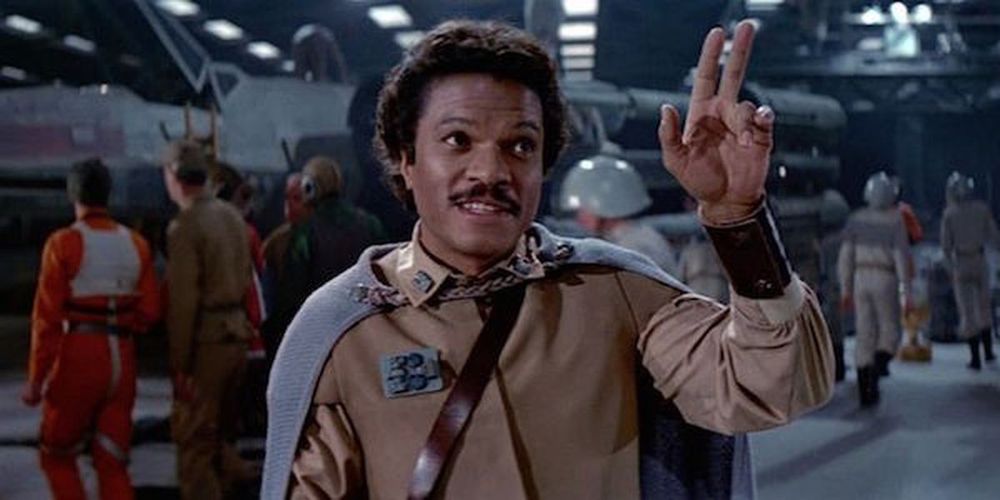May 25, 1977. I was six years old. I saw it at a duplex theater in the Bronx. My imagination has been in hyperdrive ever since.
That day, I got the first taste of what would become the quintessential modern mythology of my generation. George Lucas created a world of wonder that none of us had ever seen before. On the screen, there were starships soaring through the darkness of outer space with the balletic elegance of World-War-II-era dogfight films. There were cataclysmic explosions that were orders of magnitude more impressive than on the reruns of Star Trek I’d seen. There were samurai sword battles updated for sci-fi (behold: the lightsaber!). There were alien sand dunes and fussy lifelike robots. Star Wars mattered, immediately, to anyone with a pair of eyes in their head or a fiery imagination in their spirit.
I knew I wasn’t White like Luke Skywalker. But I also knew I didn’t need to be. Even though heroes of color were scarce in the early Star Wars universe, I still knew I didn’t need to be White to save the world.
Yet, when I role-played Luke Skywalker, the air whirring through my plastic lightsaber’s hollow canal as I attacked Empire forces in the sandbox, I never imagined myself as a sandy-haired Jedi from Tatooine. I knew I wasn’t White like Luke Skywalker. But even though heroes of color were scarce in the early Star Wars universe, I still knew I didn’t need to be White to save the world.
I can’t say I overthought the colorblind casting of our make-believe games, and I don’t know what my little Jewish and Irish homies thought, but the Dark Side wasn’t shit to someone in the Bronx in the late ’70s. We had serial killers, blackouts, and whole boroughs on fire.
Today, The Rise of Skywalker completes the trilogy of trilogies that creator George Lucas launched 42 years ago (42!) with Princess Leia, Han Solo, Luke Skywalker, and Darth Vader. For those of us who have been there from the beginning, what did it mean to be a Black Star Wars fan as the films became their own Hollywood genre — and why is my inner child still so fascinated?
In the beginning, we could walk out of the theater and immediately reenact the movies. Sure, there were the action-figure lines — complete with miniature spaceships, AT-AT walkers and Death Star space stations — all of which gave original fans the agency to invent our own adventures with these characters. But those persisted even without the toys. Our connections with the Star Wars universe amounted to a co-creative relationship that grew stronger with sequels, TV shows, comic books, novels, and video games. Even when the movies disappointed us, our own imaginations never did.
Everything Star Wars still feels as shiny, fresh, and new as the first film when I was six years old — except now that transfixed little kid is pushing 50, with hair slowly graying, walking through Disney’s new Star Wars: Galaxy’s Edge area in its Florida theme park. To the left, Black Spire Outfitters sells hooded Jedi robes for $125; on the right, adults and children build their own $200 lightsabers in a bustling workshop. The prices are bloated, but for some people, nostalgia is priceless. Passing an enormous Millennium Falcon, I sidestep Stormtroopers and walk into an on-and-popping creature cantina, ordering a soda underneath an animatronic droid’s DJ booth.
Though the attractions feel more like immersive video games than rides, the fantasy is the thing. I’m immersed in an alien landscape, casually walking past droids, landspeeders, and podracers — it’s mind-blowing. And while I’m in love with all the auxiliary parts of the Star Wars franchise, I’m glad to see that Black and Brown people have become increasingly central to the mythos on screen.
A recent meme posits that Star Wars is the “story of an orphaned boy who became radicalized after a military strike kills his family. He is indoctrinated into an ancient religion, joins a band of insurgents, and carries out a terrorist attack that kills 300,000 people.” And while that all has a humorous ring of truth to it, reimagining the franchise from that point of view isn’t how Lucasfilm saves its movies from the White savior trope.
There have been strong Black men in this galaxy far, far away. Billy Dee Williams’s Lando Calrissian, once a rogue who sold out his best friend, leveled up as a general in the Rebel Alliance 36 years ago and finally returns in The Rise of Skywalker. Donald Glover rocked a younger version of the same role in Solo. Carl Weathers runs a bounty hunters’ guild as Greef Karga on the popular Disney+ series The Mandalorian. And Finn, played by John Boyega, evolved from a bumbling Stormtrooper in The Force Awakens into the hero of every little Black boy’s cosplay fantasies. There’s also Sam Jackson’s kickass Mace Windu and Jimmy Smits as Princess Leia’s adoptive dad, Bail Organa. (And of course, the menacing voiceover work of James Earl Jones as Darth Vader)
In interviews, director J.J. Abrams gives off the same wonderment at getting to play in the Star Wars universe as anyone else who grew up in the ’80s gunning down TIE fighters at the arcade. At the opening night celebration for Rise of the Resistance (the latest Galaxy’s Edge attraction) earlier this month, I was that slack-jawed kid from that 1977 Bronx movie theater, watching the fireworks and half expecting Ewoks to emerge from the trees.
The Rise of Skywalker is already getting lukewarm reviews. But the truth is, the legend and the ethos were locked in place 42 years ago. What happens now doesn’t desecrate the past.
There will always be lightsabers. And there will always be young — and not-so-young — fans to hold them up and imagine everything they can be.
